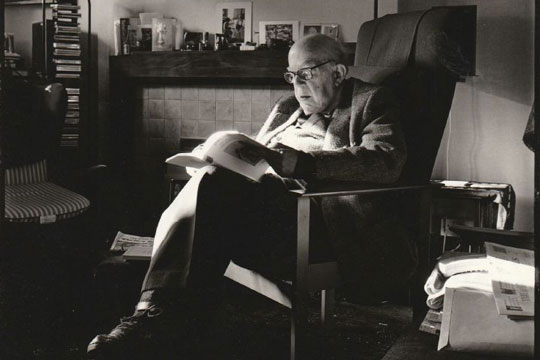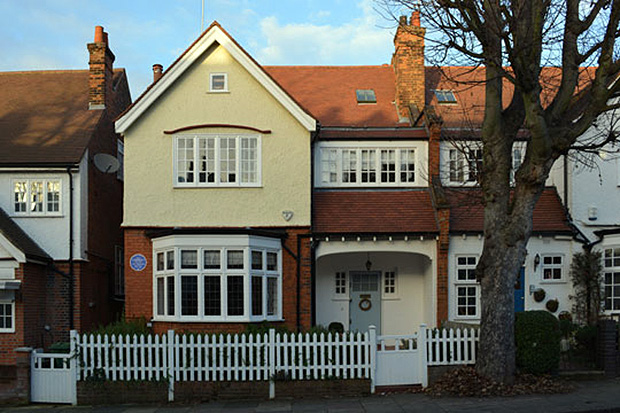
Antony Gormley unveils E.H. Gombrich blue plaque
English Heritage honours the art historian responsible for The Story of Art, the most popular art book ever published
When the Austrian-born writer and art historian Ernst Hans Josef Gombrich came to London in 1939, he was, in his own words, “just a poor foreign scholar who had no contacts and knew nobody.”
The Nazis had banned the one notable book that the 30-year-old writer had published prior to his arrival in Britain, a world history written for children. However, fellow émigré, the Phaidon co-founder Dr Bela Horovitz, understood Gombrich’s talent for explaining difficult ideas in simple terms, and commissioned a new text, this time focussing on art history and addressing a more mature audience.

The book, The Story of Art, was published in 1950 and went on to become the best selling art title ever, introducing generation after generation to art history, and, in so doing, enriching and elevating its author within post-war British society. Gombrich went on to become the director of the Warburg Institute; a professor of art at Oxford and Cambridge universities; and received a knighthood for his work in 1972.
To mark these achievements, the British sculptor Sir Antony Gormley unveiled an English Heritage Blue Plaque at 19 Briardale Gardens in Hampstead, North London last Thursday. These blue porcelain plaques, which highlight the diversity and achievements of the British capital’s past residents, have recorded everyone from Napoleon Bonaparte to Wolfgang Amadeus Morzart to John Lennon’s homes in London.

This newly commissioned plaque, which was installed last week, reads, “EH Gombrich (1909 – 2001) Art Historian lived here 1952 to 2001” and adorns the house where the historian spent most of his adult life.
Gormley might seem like an unusual choice for this unveiling, as Gombrich was more of a Renaissance expert than a contemporary art scholar. Yet Gormley first became interested in art after reading The Story of Art at school. The sculptor was joined by members of the Gombrich family, as well as Sir Peter Bazalgette, the television executive, English Heritage Blue Plaque panel member and chair of the Arts Council England.

“Ernst Gombrich opened the eyes of a generation to art, inspiring and challenging us to look at paintings and sculpture in new ways,” Bazalgette said. “English Heritage Blue Plaque not only remembers this great populariser of art but celebrates his link with this city and underlines the huge contribution made to Britain by Jewish immigrants of the 1930s.”
A fitting posthumous tribute to an outsider who became the epitome of the art establishment. To find out more about the Gombrich and the book that changed the art world, get a copy of The Story of Art here; for a deeper understanding of this important art historian, browse through our other books by Gombrich here; for more on Antony Gormley, get this monograph, which includes an interview with the artist by E.H. Gombrich; and for more on the incredible story of Europe’s wartime art refugees get a copy of Émigrés.